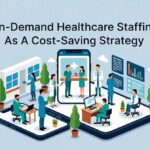In the increasingly complex and fast-paced world of healthcare, operational efficiency is critical. Doctors and healthcare administrators are faced with numerous challenges, from managing patient scheduling and medical billing to adhering to stringent regulatory compliance and insurance claims processing. These tasks, while essential, often divert time and resources away from the core mission of providing high-quality patient care. As healthcare systems evolve, finding innovative solutions to these challenges has become imperative.
One such solution to gain significant traction is the integration of a Virtual Medical Assistant (VMA). These highly trained professionals provide remote administrative support, allowing healthcare providers to offload routine tasks, reduce overhead costs, and optimize operational workflows. This article explores the role of Virtual Medical Assistants in enhancing operational efficiency within healthcare practices and offers insights into how VMAs contribute to improved patient care, better outcomes, and enhanced practice management.
Streamlining Administrative Processes
One of the most significant ways Virtual Medical Assistants (VMAs) improve operational efficiency is by streamlining administrative processes. Healthcare facilities are often bogged down by administrative tasks such as appointment scheduling, medical billing, insurance verification, patient intake, and data entry. These tasks consume valuable time that could otherwise be dedicated to patient care.
VMAs efficiently manage these critical functions remotely, offering faster processing and greater accuracy. With an increasing volume of patient visits and administrative requirements, VMAs reduce the potential for human error, ensuring smoother workflows across various departments. A 2024 study by Healthcare IT News found that practices using VMAs reported a 30% reduction in administrative errors and a 40% improvement in appointment scheduling efficiency.
By delegating these tasks to VMAs, healthcare professionals can focus more on their patients, resulting in better care quality, shorter waiting times, and improved patient outcomes. Moreover, the automation of repetitive tasks allows for more streamlined communication between medical teams, resulting in a more cohesive work environment.
Cost-Effective Staffing Solutions
The financial challenges of managing healthcare practice are well-documented, particularly for smaller practices and solo practitioners. The costs associated with hiring in-house administrative staff, salaries, benefits, training, and office space can be a significant burden. The American Medical Association reports that administrative costs account for nearly 25% of total healthcare expenses in the United States.
Virtual Medical Assistants offer a flexible and cost-effective alternative. By working remotely, VMAs eliminate the need for office space, equipment, and many other traditional staffing costs. Practices can hire VMAs on a part-time, full-time, or project-based basis, ensuring that staffing levels are aligned with demand.
Additionally, VMAs can help reduce operational inefficiencies that lead to costly billing errors, insurance claim denials, and administrative delays. According to a report by the Journal of Medical Practice Management, clinics that integrated VMAs saw a 50% reduction in billing errors and a 35% improvement in revenue cycle management.
Optimizing Patient Experience and Satisfaction
Patient experience is increasingly being recognized as a key determinant of healthcare success. With patients expecting faster responses, improved communication, and seamless access to their healthcare providers, Virtual Medical Assistants play a pivotal role in enhancing the patient’s experience.
VMAs handle a variety of patient-facing tasks such as appointment scheduling, follow-up reminders, and pre-consultation triage. They also ensure that patients are promptly informed about lab results, upcoming appointments, and treatment plans, reducing the likelihood of missed appointments and late cancellations. A 2021 survey by Medical Economics found that 72% of patients reported a better experience with practices that used remote administrative support due to shorter wait times and more responsive communication.
Moreover, with the continued rise of telemedicine, VMAs are integral to the smooth operation of virtual consultations. They help schedule telehealth appointments, verify insurance information, and ensure that patient records are complete and up-to-date before each session. This not only ensures a seamless experience for the patient but also maximizes the provider’s time during the consultation.
Enhancing Compliance and Security
Compliance with healthcare regulations, including HIPAA (Health Insurance Portability and Accountability Act), is a top priority for healthcare providers. Ensuring that sensitive patient data is protected and handled securely is critical to avoid potential legal and financial penalties.
Virtual Medical Assistants are trained in the latest compliance regulations and data security protocols. They use secure, HIPAA-compliant platforms to manage patient information, medical records, and billing processes. This minimizes the risk of data breaches and ensures that practices remain in compliance with privacy laws. Furthermore, VMAs can help reduce the administrative burden of maintaining accurate and up-to-date records, decreasing the risk of audits and penalties for non-compliance.
Research by McKinsey & Company suggests that healthcare practices that adopt digital solutions, such as VMAs, can reduce compliance-related issues by as much as 20-25% due to more efficient workflows and automated checks.
The Strategic Advantage of ARC Pointe Group’s Virtual Medical Assistant Services
For healthcare professionals considering the integration of Virtual Medical Assistants into their practice, partnering with a reliable service provider is essential. ARC Pointe Group offers specialized Virtual Medical Assistant solutions that help healthcare providers achieve operational efficiency and deliver exceptional patient care.
ARC Pointe Group’s team of VMAs is highly trained to support healthcare practices in areas such as appointment scheduling, medical billing and coding, insurance verification, patient record management, and telemedicine support. Their services are fully customizable to meet the unique needs of individual practices, ensuring seamless integration with existing systems.
By partnering with ARC Pointe Group, healthcare professionals can streamline their administrative workflows, reduce operational costs, and enhance patient satisfaction. Their expertise in handling complex administrative tasks allows healthcare providers to focus on what matters most, delivering top-tier patient care.
Conclusion: The Future of Healthcare Operations
As healthcare continues to evolve, the integration of Virtual Medical Assistants (VMAs) is becoming increasingly crucial for maximizing operational efficiency, reducing costs, and enhancing patient care. By delegating administrative tasks to VMAs, healthcare professionals can unlock new levels of productivity, efficiency, and patient satisfaction.
With proven benefits such as improved billing accuracy, reduced patient wait times, and enhanced compliance, Virtual Medical Assistants are an indispensable tool for modern healthcare practices. For doctors and healthcare providers looking to stay ahead of the curve, partnering with experts like ARC Pointe Group offers a strategic advantage in optimizing practice operations and improving overall healthcare delivery.
Did you find this helpful? Check out our other helpful articles on our website.
Read Also
- Creative Approaches to Alleviating Healthcare Staff ShortagesHospitals and clinics are facing staff shortages, which makes it harder to take care of patients well. Finding simple and useful solutions is very important. Easy changes like flexible work hours, good training, and chances to grow can help staff stay happy. Technology, like online doctor visits and helpful tools, can make work easier. Smart… Read more: Creative Approaches to Alleviating Healthcare Staff Shortages
- Understanding the Role of Sterilizers in Healthcare FacilitiesHave you ever wondered how hospitals keep their equipment safe enough to use on dozens of patients every day? Most people never think about what happens behind the scenes, yet these hidden steps play a huge role in patient safety. Sterilizers are part of that system, working quietly to remove harmful germs before any instrument… Read more: Understanding the Role of Sterilizers in Healthcare Facilities
- Building Healthcare Access Where It’s Needed Most: A Local First ApproachHealthcare shouldn’t depend on where you live. But in the U.S., it often does. If you’re in a big city, you likely have options. If you’re in a small town or an underserved neighbourhood, it’s a different story. To fix this, more healthcare leaders are turning to a local-first approach. That means putting clinics and… Read more: Building Healthcare Access Where It’s Needed Most: A Local First Approach
- Revolutionizing Patient Engagement: Innovative Solutions for Improved Care and Treatment SuccessNavigating healthcare system can often feel overwhelming for patients. Between appointments, prescriptions, and treatment regimens, it’s easy for crucial details to get lost in the shuffle. That’s why effective patient engagement and support solutions are more important than ever. Companies like Serva Health, with their pharma hub services, are stepping up to ensure that patients… Read more: Revolutionizing Patient Engagement: Innovative Solutions for Improved Care and Treatment Success
- On-Demand Healthcare Staffing As A Cost-Saving StrategyThis is an exciting and challenging time for the healthcare industry. Technology is advancing almost faster than humans can keep pace. New legislation is creating fresh challenges for the future of healthcare, and the shifting population demographic continues to place more pressure on healthcare facilities. Amidst these changes, healthcare facilities are facing a critical staffing… Read more: On-Demand Healthcare Staffing As A Cost-Saving Strategy
- Automated Healthcare Software Solutions: How Intelligent Platforms Are Redefining Clinical, Administrative, and Operational ExcellenceThe healthcare industry is undergoing a seismic transformation. Rising patient volumes, value-based care models, staffing shortages, and complex regulatory demands have prompted organizations to look beyond traditional tools and embrace advanced software automation. As providers search for innovative partners capable of tailoring these sophisticated systems to real-world workflows, many turn to MCSI (Managed Care Systems,… Read more: Automated Healthcare Software Solutions: How Intelligent Platforms Are Redefining Clinical, Administrative, and Operational Excellence
- The Benefits of Contract Labor Staffing in HealthcareThe most successful healthcare facilities today aren’t just reacting to crises—they are building workforce resilience to withstand them. Unpredictable patient demand, coupled with persistent nursing shortages, has made the traditional staffing model obsolete. Relying on mandatory overtime to cover a sudden surge in capacity is a recipe for high turnover and rising employee burnout relief… Read more: The Benefits of Contract Labor Staffing in Healthcare
- Why Whole Slide Imaging Shapes the Future of Digital PathologyWhole slide imaging has become one of the most important developments in modern pathology. It changes how tissue is examined, how cases are shared and how pathologists collaborate with the wider care team. More than a technological upgrade, it represents a shift in how laboratories think about their workflow, their storage needs and the tools… Read more: Why Whole Slide Imaging Shapes the Future of Digital Pathology









